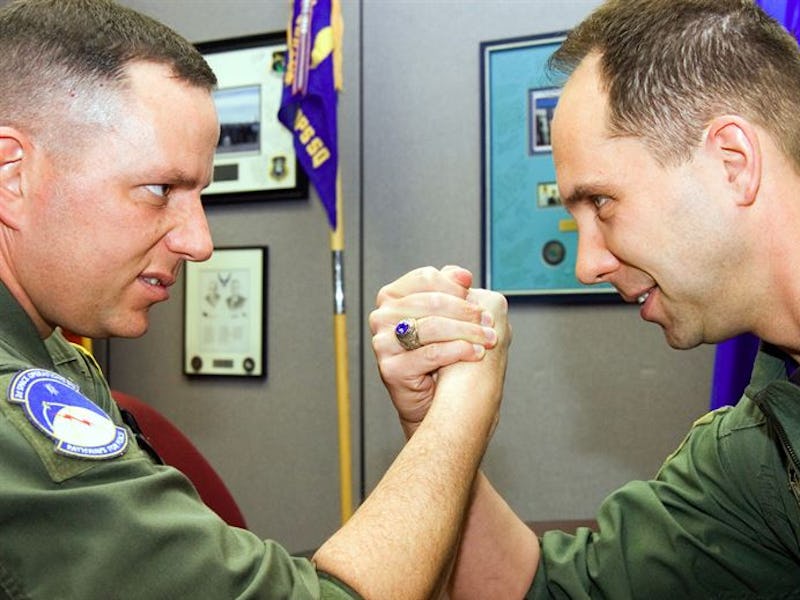Oddly Lopsided Identical Twins Suggest Diminished Role of Fitness Genes
"We had to control for brother competitiveness."

Comparing yourself to your sibling is a toxic habit that should probably be avoided at all costs, unless you’re using the comparison to investigate one of the most delicate balances in genetic research: What plays a bigger role, nature or nurture? A pair of 52-year-old identical twins — one a triathlete, the other a trucker — formed the basis of a new study by researchers at San Francisco State, which revealed that human genetics, though powerful, don’t determine everything.
In the study, the team compared the health of of the twins, who had taken very different life paths over 30 years. Both were raised in the same Midwestern household, but that’s about where the similarities between them end. The triathlete twin ran 39,431 miles over 30 years, became an All-World Bronze level ironman qualifier in 2005, and, eventually, got a job as a high school track coach. The other twin used to exercise but stopped to pursue a relatively sedentary lifestyle, eventually becoming a truck driver.
Despite these differences, the two are monozygotic twins that share 99.9 percent of their DNA, assistant professor of kinesiology James Bagley Ph.D. explains, and so they presented the perfect way to study how the same set of genes reacts to two different lifestyles or environments.
“We had this opportunity to just cut out the genetic part totally, and just see what nurture does,” he tells Inverse. “Any difference between them should be related to nutrition, where they live or exercise. So we brought them out here and did a battery of tests and the differences we found were some of the largest in the literature.”
Ironman triathalons consist of a 2.4 mile swim, 100-mile bike and a full marathon all in succession. They require serious training, and perhaps a genetic predisposition to excel at the highest level
This study comes in the wake of an onslaught of research showing that, although genes are strongly implicated in conditions from aggression to depression, the environment still plays a huge role in how health is determined. Bagley set about defining how big a role the environment actually plays, using these twins to disentangle nature from nurture.
These twins actually fell onto Bagley’s radar by accident, as one of the students in his lab happened to know one of them. He couldn’t resist this perfect natural experiment, and fortunately neither could the twins. They were each excited to take part in a battery of physical tests as well as undergo measurements intended to show muscle strength, body fat percentage and other health-based metrics like blood pressure, says Bagley. But they were careful to only bring one twin in at a time.
“They’re both super competitive,” Bagley says. “So we have to control for brother competitiveness.”
A comparison of the physiological differences between twins in this study versus twins in three other landmark studies. In metrics like body mass, BMI and VO2 Max, this study shows far greater percentage differences between the two twins, suggesting that environmental factors play a big role in how fitness develops over time.
In each of the physical fitness tests, the trained twin, unsurprisingly, outperformed the untrained one. He had a higher VO2 max (a measure of aerobic fitness), lower blood pressure, lower cholesterol, and a better general level of overall health. Things were looking pretty bleak for the untrained twin, until they measured leg strength: The untrained twin’s victory came in the form of stronger muscles surrounding his knees compared to those of his ironman brother. This, Bagley hypothesizes, is due to the fact that the untrained twin has been carrying more body weight for 30 years. Still, it was a small victory.
While he didn’t compare the twins to any other individuals, he noted that the untrained twin was about as healthy as an average American. In other words, things could have been much worse — perhaps a spillover the effect of some ironman-level genes keeping his health afloat. This, Bagley admits, presents an avenue for further research.
The good news is that both twins are excited to keep the experiments going. They’ve already agreed to participate in another round of surveys, so we haven’t seen the last of them. “We’re going to follow these guys up pretty much forerver,” Bagley says. “It’s a super rare situation, and they’re into it too.”